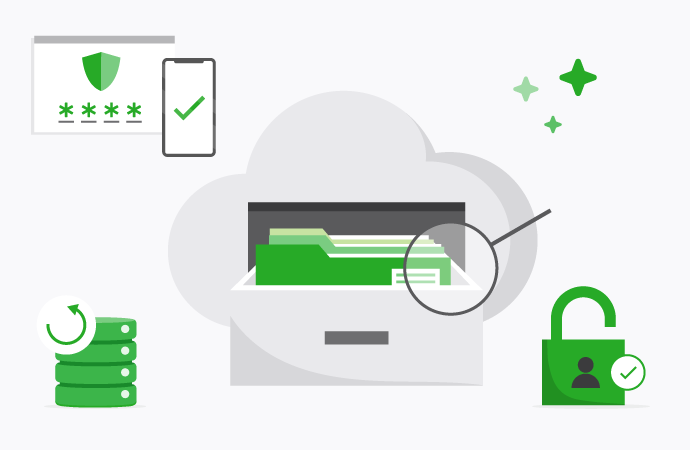Cloud-based services allow for fast and seamless data sharing between systems and applications. But they also come with a unique set of challenges, as organizations must ensure accessibility and availability of data in an ever-growing cloud environment while maintaining security across all cloud services.
Here are some cloud data governance tips to protect and optimize your data in the cloud – so you can reap the full benefits of your cloud services.
1. Data decluttering for cost savings
Does your data spark joy – or if not, real insight? If not, it could be time to Marie Kondo your cloud data.
These days, organizations are generating and collecting more data than ever before – from transactions to security logs and everything in between, yet often without much purpose. But just because it’s stored away in the cloud instead of physical folders, it doesn’t mean that storage is free.
To extract the most value from your data, you’ll ideally want to centralize it within a single database where it can be securely stored and analyzed. This will enable you to review all files and folders, and give your data a thorough declutter by eliminating duplicates and files you no longer need.
While you’re doing this, it’s worth assessing the effectiveness of your organizational system – and, if necessary, setting up a new file structure that helps everyone access the data they need quickly and easily.
2. Keeping cloud data safe and sound
While businesses may have concerns about storing data in the cloud, in fact it carries additional security benefits. That’s because a reputable cloud provider can ensure a level of data protection that most organizations don’t have the money or resources to handle on-site.
But to keep your data safe in the cloud, you should also follow security best practices:
- Adopt standardized security policies across all your cloud environments, regardless of provider.
- Use encryption tools wherever possible to encode data so that only authorized users can access it.
- Centralize data into a security data lake to enable visibility and continuous monitoring.
- Implement access controls so that users can only access the level of data they need for their job.
- Set strong passwords and multifactor authentication to prevent unauthorized access to data.
- Validate the features of all cloud services against their security and governance policies.
- Train your employees in best practices for securing data and identifying potential threats.
- Back up your data to reduce any business interruption if data is lost from its primary location.
3. Streamlining data movement and retrieval
One of the biggest issues with cloud data management is that bandwidth limitations can result in slow data transfer speeds. What’s more, different cloud providers often use varied data formats, making it difficult to transfer data between them – creating data silos.
When moving data in and out of the cloud, one solution is data compression using software that reduces the number of bytes required to represent data. Cross-cloud data sharing solutions, such as Google’s Cross-Cloud Interconnect, are designed to enable data portability.
Using Secure File Transfer Protocol (SFTP) instead of APIs can also improve interoperability between cloud service providers, while providing a high level of security for sending and receiving file transfers.
4. Monitoring and auditing cloud activities
When it comes to data cloud security, responsibility is shared between you and your provider. The level of security that you need to manage will depend on the model you choose:
- Infrastructure as a Service (IaaS). The vendor handles infrastructure security while you’re responsible for the operating system, application, and data security.
- Platform as a Service (PaaS). You have less responsibility than with an IaaS, as you only need to account for securing your application and its data.
- Software as a Service (SaaS). The vendor takes care of most security, while you just have to verify user identities and secure the data itself.
But remember, you can only manage what you can see. No matter what your underlying cloud infrastructure, you need full visibility to get a complete picture of how your cloud environment is functioning.
Regular security assessments are vital to review the effectiveness of your security measures and identify any potential vulnerabilities. You should also be monitoring cloud logs and audit trails to spot and prevent any unauthorized access to cloud data.
5. Cloud printing that plays nice
While cloud printing has many benefits, the level of security depends on how well your cloud service controls access to documents and data. The key is choosing a cloud print management provider that can secure your print environment to ensure your data never falls into the wrong hands.
With PaperCut’s public cloud print software, your print job paths stay on your network and move between on-premise devices – using the cloud to coordinate print jobs. The software also authenticates the user and the device every time anyone interacts with the system.
The only time your print document needs to talk to the cloud is if you’re sending a print job remotely to the office. But all the data on the print job is fully-encrypted – whether it’s waiting to be released from the cloud, or moving from your device to the print queue to the printer.
That means that even if a hacker does manage to access your network, they won’t be able to read any sensitive information.




